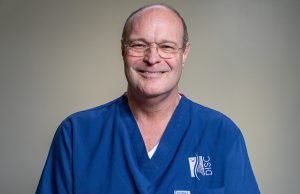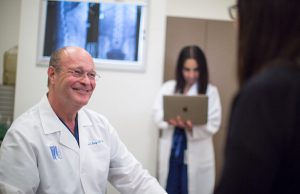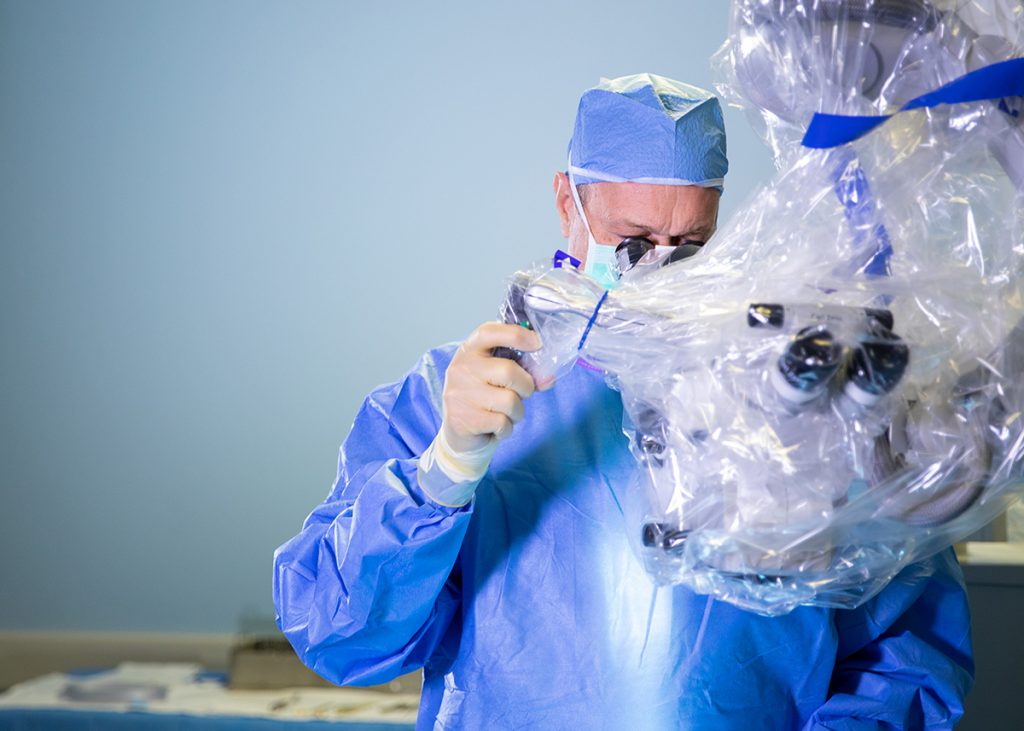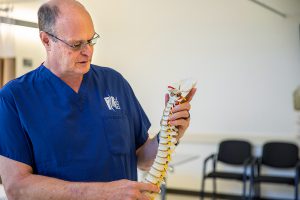
By Dr. Robert S. Bray, Jr. | Special to the NB Indy
With COVID-19 cases surging again and hospitalizations up in Orange County, many residents worry that seeing a doctor now will only increase their risk of exposure. They continue to put off care for everything from elective surgery to nagging neck or back pain, not realizing that certain conditions, if left untreated, could have lasting or irreversible negative consequences.
As a neurological spine surgeon, I’ve seen firsthand the impact of delaying care when the spine is involved. Those now dealing with permanent nerve damage and loss of motor function could have avoided those issues had they sought help earlier.
If you’re suffering through discomfort or ignoring health warning signs while you ride out the pandemic, I want you to know one thing: the risk of not obtaining timely care far exceeds the risk of COVID-19 exposure.
Given the enhanced, stringent screening and cleanliness protocols many healthcare providers have in place, as well as the fact that most procedures and surgeries can be done in high-acuity outpatient centers, seeing the doctor today may actually be safer than it’s ever been before.

When I launched DISC Sports & Spine Center in Newport Beach in 2006, my original thought process was that spinal surgery and complex orthopedic care could be done safely in an outpatient setting, with improved outcomes, decreased infection risk and increased cost efficiency. The infection control measures we established then have yielded us a history of zero infections and have been crucial in informing how we mitigate COVID-19.
That said, I recommend that patients address their biggest concerns by having healthcare providers answer these six questions before seeking elective surgery during COVID-19:
- What types of surgeries are performed at the surgery center? There are different types of ASCs: multi-specialty and high-acuity centers. Search for a center that solely performs orthopedic and spine procedures as they will tend to be more specialized and able to deliver a high quality of care.
- How many patients does the center treat daily? Typically, a multi-specialty center correlates to a high patient volume. With a single-specialty center that focuses on high-acuity surgery, patient volume will typically be less than 10 to 15 patients a day, which significantly lowers your contacts and risk.
- What air filtration and cleanliness protocols are in place? Look for a center where the environment is 100% high-flow, HEPA filtered and UV-treated not only in the operating rooms (as traditionally in hospitals) but in the entire facility. The facility should undergo a rigorous cleaning protocol on all high-touch areas. All staff members should always wear masks and appropriately use N95 masks during any aerosol-producing event such as intubation or surgery.
- What type of COVID-19 testing is done and who is tested? Ideally, a surgery center should test all pre-op patients using nasal swabs and performed by a CLIA certified lab. The Clinical Laboratory Improvement Amendments (CLIA) program regulates laboratories that test human specimens and ensures they give accurate, reliable and timely patient test results regardless of where the test is performed. Additionally, all members of the staff should be routinely tested, and the center should perform temperature checks before allowing anyone entry.
- How does the center keep patients isolated from each other? Any waiting areas should allow for proper social distancing, though wait times should be as minimal as possible. The center should provide private rooms for pre/post-operative care, and patients should have access to designated restrooms that are not shared by others between cleanings.
- Is Telemedicine an Option? For clinic visits or routine follow-ups where it’s not feasible to COVID-19 test each patient every time, telemedicine can play a vital role, allowing doctors to have initial consultations with patients, review their results and identify next steps. In my practice, telemedicine has allowed me to expedite the process of care, often getting the initial consultation within a few days and not weeks. From there, we can get started on a treatment pathway.
Ultimately, the key to safely navigating spine or orthopedic surgery in the age of COVID-19 is about finding a healthcare provider that is protocol-driven and willing to demonstrate the measures they’re taking to minimize risk while elevating the quality of care.
It is neither necessary nor wise to put off getting help to the point of increasing pain or disability, pandemic or not, provided you know what to look for.
A healthcare provider able to field all six questions above with confidence can not only get you back to your top shape, but will also do it in an environment that’s safer than any routine public place.
Visit https://brayspine.com/ and www.discmdgroup.com for more information.






